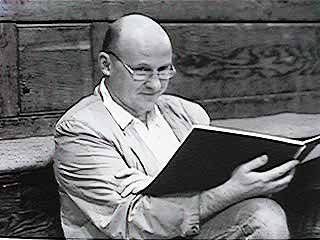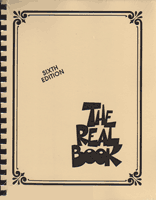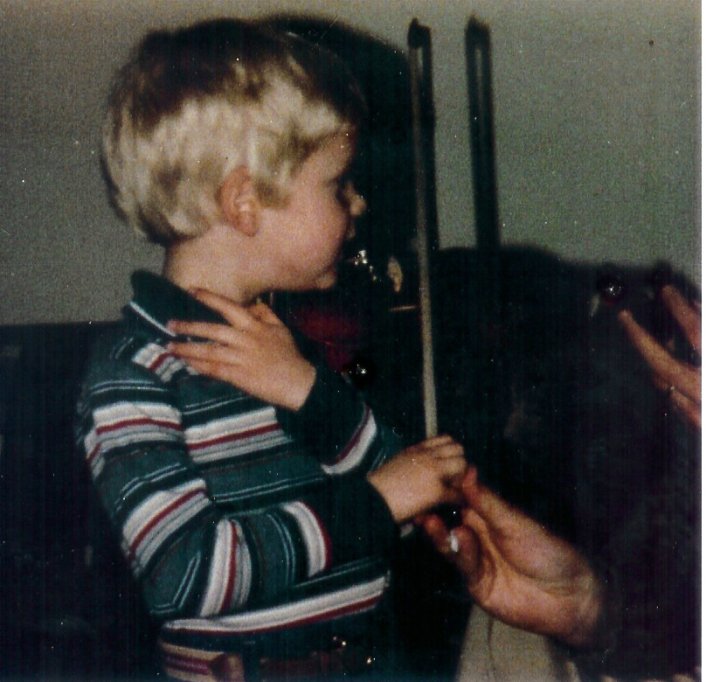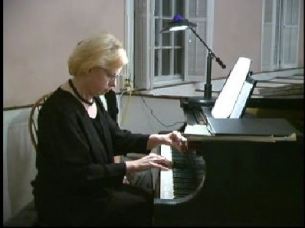Arvo Pärt recordings
Two new recordings of mine are up, on YouTube and SoundCloud, both pieces by Estonian composer Arvo Pärt.
Read MoreTwo new recordings of mine are up, on YouTube and SoundCloud, both pieces by Estonian composer Arvo Pärt.
Read More
Red Garland was one of my first jazz influences. Early high school was spent listening almost nonstop to the albums he recorded with Miles Davis. I’m not sure why I was so drawn to him. I remember that my teacher was the first to introduce me to him, and that my friends and I wore out those albums. I was so enamored with Garland that my AOL username was partly a “tribute” to him. As is the case with much of what I listened to in high school, over time I listened to him less and less - but whenever the mood struck me and I turned on some of those early Miles albums, I couldn’t help but smile and sing along to Garland’s solos.
A previously unreleased set of Garland’s was released a few months ago. I purchased it without pause, excited to hear him play in a live trio setting, towards the end of his career (and his life). It reminded me that I’ve been wanting to formally transcribe and upload his classic solo from “Bye Bye Blackbird,” off of Miles’s ‘Round About Midnight album. I transcribed it a long time ago, but over the years, as my jazz practice fell off and transformed into jazz appreciation, I forgot it - about the solo, and how to play it. Of course, whatever notes I made years ago were lost to the ages.
So I started from scratch. I hadn’t transcribed a jazz solo for a long time and this experience made me realize how much I missed this simple act. It’s an act of creativity, in a way, even if it’s not creative in the sense of making something anew. There’s something special about spending time with a piano, a pencil, some staff paper, and a recording, and blocking out the rest of the world as you listen to a masterful recording, taking what you already know inside and out and putting it on paper.
This solo is such straightforward Garland that it should be in every textbook. The melodic contour is pure medium tempo bebop: we see tritone substitutions, chordal outlines, passing tones and entrapment, ghost notes. The comping left hand plays on the and of beats 2 and 4, a rhythm that can be heard in many Garland solos and when he’s comping behind other players; the anticipation of the beats helps propel the solo forward.
We wouldn’t have a Garland solo if there weren’t a block chord section. Garland’s block chord style is unique but relatively simple. The left hand usually plays rootless voicing of the chord, oftentimes with alterations. The right hand outlines an octave with the middle voice sounding a fifth up from the bottom. This interval often creates tension, because it falls outside of the chordal harmony. As was typical of Miles recordings from this era, Garland only plays half of this chorus before Miles enters in with the out head.
Garland plays a block chord introduction, also included here. It’s a classic intro in the jazz world, and a great starting point for inexperienced musicians to begin creating head arrangements in a combo setting.
The complete transcription can be found on my transcriptions page. I’m not sure exactly what I’ll do with this transcription, but I'm glad I worked on it. I hope that people can find a good use for it!
Please do send feedback or corrections!
"... by touching the lives and feelings of ordinary people.” This quote from Gavin Bryars points to his mission as a composer, and is revealed through some of his new music for piano.
 via www.gavinbryars.comYou won’t find much in Gavin Bryars’ new Piano Concerto that is harsh to the ears. The stereotypical avant-garde music of the 20th and 21st Centuries is far removed from the music on the new Naxos release of Bryars’ Piano Concerto (The Solway Canal), After Handel’s Vespers and Ramble on Cortona.
via www.gavinbryars.comYou won’t find much in Gavin Bryars’ new Piano Concerto that is harsh to the ears. The stereotypical avant-garde music of the 20th and 21st Centuries is far removed from the music on the new Naxos release of Bryars’ Piano Concerto (The Solway Canal), After Handel’s Vespers and Ramble on Cortona.
The British composer is perhaps best known for his pieces The Sinking of the Titanic and Jesus Blood Never Failed Me Yet. Both were written for atypical ensembles, including tape and other electronics, and were first recorded on Brian Eno’s record label in the 1970s. (They have since been revised and rerecorded). It’s telling that his early music was released on Eno’s record label; it’s not ambient music, but Bryars’ music has a familial relationship with it. Bryars’ was a student of John Cage and his compositions place him near the better known Gorecki and Pärt on the musical family tree. Here, Bryars looks to more traditional ensembles and forms on one of the finer classical music releases of the first part of 2011.
 via www.naxos.comThe Piano Concerto is not one that features technical flair and drama. An audience won’t instinctively leap to its feet as they would at the end of a Rachmaninov concerto. But that doesn’t make it any less intriguing or enjoyable. What you’ll hear, instead, is a nearly 30-minute piece for piano, men’s chorus and orchestra that borders between impressionistic and post-minimalist styles, full of dark, evocative sounds and subtlety. The piano serves as a mentor to the ensemble, guiding and handing off material to the orchestra, rather than forcing them to serve a more subservient role as in more traditional concerti.
via www.naxos.comThe Piano Concerto is not one that features technical flair and drama. An audience won’t instinctively leap to its feet as they would at the end of a Rachmaninov concerto. But that doesn’t make it any less intriguing or enjoyable. What you’ll hear, instead, is a nearly 30-minute piece for piano, men’s chorus and orchestra that borders between impressionistic and post-minimalist styles, full of dark, evocative sounds and subtlety. The piano serves as a mentor to the ensemble, guiding and handing off material to the orchestra, rather than forcing them to serve a more subservient role as in more traditional concerti.
The piece opens simply enough, with open 5ths played by the orchestra and piano, but soon the tonal center shifts around, never quite leaving A minor and C major, but never quite settling on it, either. Chromaticism recurs through the piece, often on the outlying edges of the score, but never intrudes enough for the piece to lose its tonal feel. The imagery of the sonnets by Scottish poet Edwin Morgan and the haunting quality of the men’s chorus are unusual in the context of a piano concerto, but suit this piece and Bryars’ compositional style well. This is an unobtrusive piece, whose beauty lies in its simplicity. It’s the first glimpse of a flower bud underneath the snow of a long winter.
The opening pieces on the album are for solo piano. After Handel’s Vespers was originally written for the harpsichord, and translates well to the piano. Ramble on Cortona is Bryars’ first work for solo piano, the dedicatee, like the Piano Concerto, being pianist van Raat. Both works acknowledge earlier music – Vespers from the 17th and 18th Centuries, Ramble from the 13th Century – but take full advantage of the piano’s sonorities and the capabilities of a contemporary composer. As Bryars has said, “one of the challenges I enjoy is writing in the light of history … I take great sustenance from the music of the past.” He has the ability to reference and incorporate earlier styles without losing his own voice.
The performances by piano soloist Ralph van Raat, the Netherlands Radio Chamber Philharmonic and the men of the Capella Amsterdam suit the music well. Raat has a touch that brings out the lyrical qualities of Bryars’ music, and the Philharmonic lingers on every note in the Piano Concerto until the last possible minute, absorbing themselves and the listener in the moments at hand.
Kudos to Naxos for this fine album, and for continuing to release new music. The label has long moved from simply being a clearinghouse of “budget classical” records made by Eastern European musicians to one of the foremost record labels for new and previously unrecorded classical music.
 I'm proud to report that, even though it was a little dusty, my Real Book still functions properly. I won't go so far as to say it's aged like a fine wine - the missing table of contents and back pages would say otherwise - but it's still functional. I got it at Birch Creek Jazz Camp when I was in 11th grade (and somehow I've acquired both a Bb and bass clef version over the years, in what will probably go down as one of life's great mysteries) and put it to a lot of good use, but I haven't had much reason to use it lately.
I'm proud to report that, even though it was a little dusty, my Real Book still functions properly. I won't go so far as to say it's aged like a fine wine - the missing table of contents and back pages would say otherwise - but it's still functional. I got it at Birch Creek Jazz Camp when I was in 11th grade (and somehow I've acquired both a Bb and bass clef version over the years, in what will probably go down as one of life's great mysteries) and put it to a lot of good use, but I haven't had much reason to use it lately.
But I brought it out for I had a gig two weeks ago at Krannert Center with two fine singers. We played for a wine tasting, and centered our musical presentation around showtunes. I played some solo tunes, and one of those - clearly not a showtune - was Fleurette Africaine by Duke Ellington:
I hadn't played this piece in public in a very long time, probably since my busy gigging days of late high school and early college. I love it, and while my rendition isn't as great as Vijay Iyer's (that goes without saying), I'm still happy with it.
Thanks for watching and listening!
 Suzuki violin lessons, approx age 4I’ve been playing piano for over 23 years. (That’s a rough estimate – both my mother and I don’t remember if I started lessons in first or second grade, but it was at some point after I stopped Suzuki violin lessons.) I’ve taken lessons for most of that time. During that time I also played trumpet (briefly) and euphonium, played in concert and jazz ensembles, and directed many ensembles, from marching bands to small pit orchestras.
Suzuki violin lessons, approx age 4I’ve been playing piano for over 23 years. (That’s a rough estimate – both my mother and I don’t remember if I started lessons in first or second grade, but it was at some point after I stopped Suzuki violin lessons.) I’ve taken lessons for most of that time. During that time I also played trumpet (briefly) and euphonium, played in concert and jazz ensembles, and directed many ensembles, from marching bands to small pit orchestras.
My musical résumé isn’t one that movies are made from, but it is nonetheless substantial. And, yet, when I sit down in a practice room, I still find myself struggling. Sometimes I hit a groove and accomplish a lot. Other times I’m struck with “practice room ADD.” Striving for better practice routines and techniques is something I’m constantly doing.
Which is why I found Gretchen Saathoff’s e-book Goal-Oriented Practice: How to Avoid Traps and Become a Confident Performer such a pleasure to read.
Goal-Oriented Practice is a well-structured blend between technical ideas and more abstract techniques. Books such as The Inner Game of Tennis and Effortless Mastery are great, but they are theoretical and often intangible. Goal-Oriented Practice offers enough concrete ideas to help improve your playing immediately; there are enough conceptual ideas for you to consider many times over.
 via http://gretchenspianos.wordpress.com/Ms Saathoff's writing is frank and down-to-earth. She doesn’t mince words, but she isn’t harsh or scolding. As a reader, you know that she is often speaking from experience. (Her personal stories make her e-book more approachable, as well.) She outlines ways to improve your practice environment, how to warm up and learn music, and how to set practice goals.
via http://gretchenspianos.wordpress.com/Ms Saathoff's writing is frank and down-to-earth. She doesn’t mince words, but she isn’t harsh or scolding. As a reader, you know that she is often speaking from experience. (Her personal stories make her e-book more approachable, as well.) She outlines ways to improve your practice environment, how to warm up and learn music, and how to set practice goals.
Perhaps most importantly, as the book develops, she reminds you of the practice tools you “already own” and encourages you to activate your “self” as you practice. This is a reminder we can all use from time to time. As she writes, “Your best practice guide is YOU!"
Ms Saathoff’s e-book format allows for easy accessibility: the book can be downloaded to your laptop, smartphone, or e-book reader, and can be pulled up in the practice room if you need to reference a section or just want to read something to reinspire your darker practice room moments.
My one complaint though is that the PDF doesn’t include active links to YouTube files or other websites. That can be tricky, as websites are constantly in flux and YouTube videos can now be removed if there’s even a whiff of copyright infringement. Thankfully, Ms Saathoff blogs regularly, and is always coming forth with new ideas, information, and links to the larger Internet world.
Goal-Oriented Practice is geared towards pianists, but has great material for all instrumentalists and singers. Even the best musicians need books to read to inspire and invigorate their playing and practicing. Goal-Oriented Practice is worthy of addition to the list of recommended readings. I know I’ll be keeping it close-by for many years ahead.